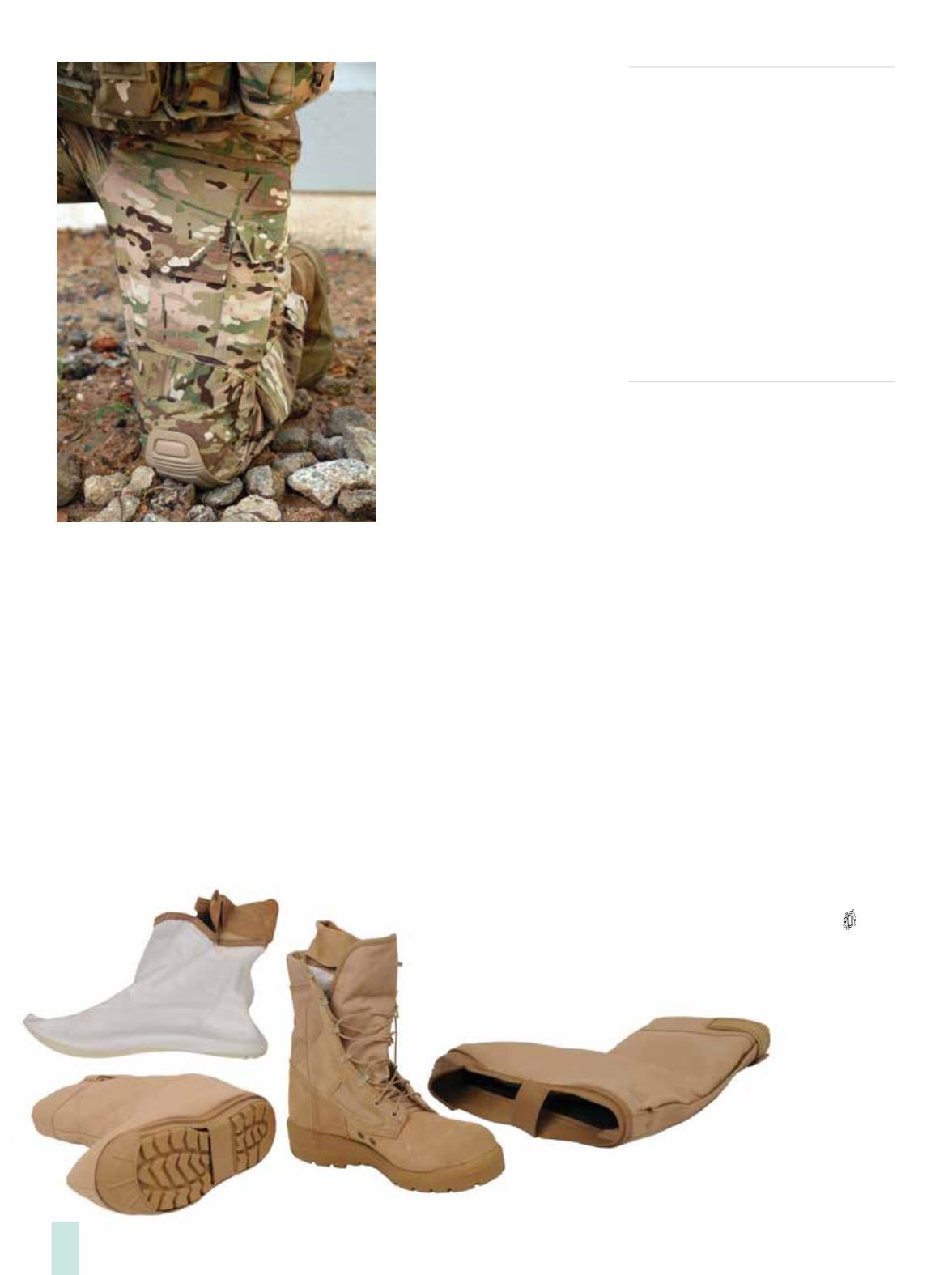

Depending on the technology readiness
level, we can refer them to Natick, Army
Research Laboratory, Navy Laboratory,
or other REDECs. People approach PEO
Solider all the time with ideas.
IO:
So it’s okay for companies to
come to you with ideas, and you can
send them in the right direction?
DR. ZHENG:
I want to em-
phasize that we have many prob-
lems and challenges. We are com-
mitted to the soldier and have a
very long list of technologies that
we need to develop. One of the
challenges for individual clothing
is combining those functionalities
into one fabric.
IO:
Dr. Zheng, with regard to
doing business with the govern-
ment now, is sequestration an
issue? Has funding gone down?
Is it going up?
DR. ZHENG:
With the military,
specifically for protective items,
it’s never an issue. Programs for
protective items are always very
strongly supported. Protecting
soldier’s lives and making equip-
ment more effective is the number
one priority in the Army. If there
is an unfulfilled need, it’s not due
to lack of money, it’s that we don’t
have the technology available to
meet the need.
IO:
So if a company devel-
oped a phenomenal technology
that solved several problems for
you, and the Army said we want
this, then the Army would move
toward making sure there is funding
for that?
DR. ZHENG:
We would first have
to perform an evaluation to make sure
the new technology actually improves
performance. Another factor that can
affect how we develop and field items
is military conflicts. In the past, we
have developed a new item with the
plan to procure it very slowly over
15 years. Then we went to
war and needed to purchase
everything in two or three
years. If we have to send
our soldiers in harm’s way
to protect the U.S. and our interests,
we have to give our soldiers the best
materials and equipment.
IO:
That’s a tall order when you
factor in all of the properties you need
in these products. So part of your job is
readiness?
DR. ZHENG:
Right. With regard to
R&D, we never stop and we are always
looking ahead. Every month, every year
there is constant research and plan-
ning. We are constantly preparing for
the worst thing to happen. My job is to
make sure we have those technologies.
We have to be ready.
IO:
So you are always looking ahead.
DR. ZHENG:
Yes. Ultimately we are
looking ahead to 20, 30, even 50 years.
Some developments may be three or five
years away. In the short termwe perform
technical assessments and determine
which technologies can be developed
quickly. The Army is constantly doing this,
assessing short term, middle term, long
term, and reevaluating our goals.
Glenna Musante writes about the textile
and apparel industries and this past summer
won her third award in
three years for
textile science
feature writing.
Performance
wear, from yoga at-
tire to military issue,
is a primary focus area.
She can be reached at glenna@
musantecommunications.comor
www.glennamusante.com.
The Army Combat Pant (ACP) is a flame
resistant pant designed for use in rugged combat
environments. The ACP features a ruggedized,
anti-abrasion coated seat panel, stronger
twill fabric in the body of the pants and stretch
fabric at key stress points. The ACP has
integrated, removable hard-shell knee pads
with horizontal and vertical points of
adjustment built into the pants.
PEO Soldier Modular Boot System
“We haven’t selected
a new jungle fabric or
uniform. We are in the
development space for
the jungle uniform …
We’re looking for
lightweight materials
that are quick-drying,
breathable, provide
vector protection, no
melt no drip, and are
durable.” – Dr. Zheng
Inside
Outdoor
|
Fall
2015
30
















